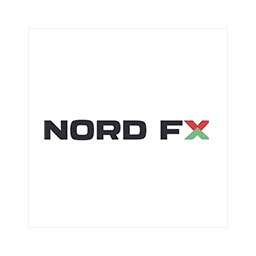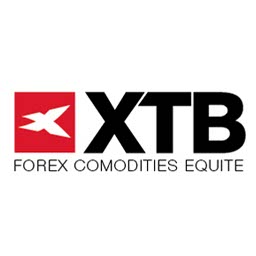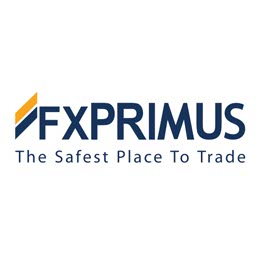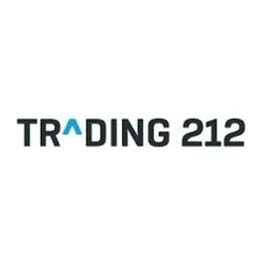Best European High Leverage CFD Brokers
In Europe, CFD leverage limits of 30:1 to 2:1 depending on financial instrument type, serve as the financial safeguards that control the amplification of trading positions, dictating the extent to which traders can magnify their exposure to market movements. These limits are meticulously calibrated to mitigate risks and protect investors.
The regulatory authority overseeing trading leverage in Europe is the European Securities and Markets Authority (ESMA). ESMA acts as the sentinel of financial markets, imposing stringent standards and restrictions to maintain market stability. They harmonize leverage limits across European Union member states, ensuring a consistent and secure trading environment.
These leverage limits, often dynamic and subject to periodic revisions, are essential guardrails that prevent excessive risk-taking and safeguard the interests of traders and the broader financial ecosystem.
Best European High Leverage CFD Brokers Table of Contents
- What are the critical risks of trading CFDs through European high-leverage brokers for retail investor accounts?
- How do European high-leverage CFD brokers ensure that retail investor accounts are adequately protected when engaging in CFD trading?
- What regulatory measures are in place to safeguard retail investor accounts regarding high-leverage CFD trading?
- Can you explain the advantages and disadvantages of high-leverage CFD trading for retail investors using European brokers?
- Advantages:
- Disadvantages:
- What are European CFD brokers' typical margin requirements and leverage ratios for retail investor accounts?
- Margin Requirements:
- Leverage Ratios:
- How can retail investors assess the suitability of their trading strategies when using high-leverage CFD brokers in Europe?
- Are there any restrictions or limitations on specific trading strategies when utilizing high-leverage CFD brokers in the European market?
- What risk management tools and features are available to retail investors trading CFDs through European brokers with high leverage?
- What is the impact of regulatory changes on the availability of high leverage for retail investor accounts when trading CFDs in Europe?
- How can retail investors ensure that their chosen CFD trading strategy aligns with the risk tolerance associated with high leverage?
- Are there any best practices or guidelines for retail investors to follow when devising a trading strategy for CFDs through European high-leverage brokers?
- What is the role of education and investor awareness in helping retail clients understand the complexities of high-leverage CFD trading?
- Can you explain the differences in margin calls and stop-loss mechanisms European CFD brokers offer for retail investors engaged in high-leverage trading?
- Margin Calls:
- Stop-Loss Mechanisms:
- How do European high-leverage CFD brokers handle disputes or issues related to the execution of trading strategies for retail investor accounts?
- Are there any specific reporting or disclosure requirements for European high-leverage CFD brokers when serving retail clients engaged in CFD trading?
- How can retail investors stay informed about changes in margin requirements and leverage ratios when trading CFDs through European brokers?
- What steps should retail investors take to diversify their trading strategies when using high-leverage CFD brokers in the European market?
- What are the tax implications for retail investors who engage in high-leverage CFD trading through European brokers?
- Can you provide insights into the historical performance and track record of European high-leverage CFD brokers concerning the success of retail investor trading strategies?
- How Do European High-Leverage CFD Brokers Facilitate Forex Trading with Low Minimum Deposits?
- How Do European High-Leverage CFD Brokers Ensure Compliance with Financial Sector Conduct Authority (FSCA) Regulations?
- What Role Does Automated Trading Play in the Offerings of European High-Leverage CFD Brokers?
- Best European High Leverage CFD Brokers List Compared

In the fast-paced world of financial markets, European high-leverage CFD brokers stand out as critical facilitators of trading opportunities. These brokers offer retail investors access to various financial instruments, including forex and CFDs, all while harnessing the power of high leverage. Low minimum deposits and advanced trading tools enable traders to start their journey into the forex market and beyond. Leveraging multiple trading platforms, investors gain direct market access, allowing them to open leveraged positions swiftly. However, it's essential to recognize that while a high-leverage forex broker confers significant advantages, it also carries risks, and retail investor accounts lose money rapidly if not managed prudently. In this landscape, European high-leverage brokers play a vital role, offering low trading fees and essential risk management tools to help traders mitigate losses.
What are the critical risks of trading CFDs through European high-leverage brokers for retail investor accounts?
When retail investors engage in CFD trading through European high-leverage brokers, they must be aware of several significant risks:
-
High Leverage: Trading with high leverage can amplify both gains and losses. While it offers the potential for substantial profits, it also exposes investors to the risk of losing more than their initial investment.
-
Negative Balance Protection: Some brokers provide negative balance protection, but it may not always be foolproof. In volatile markets, gaps in protection can result in retail investor accounts losing more than their deposited funds.
-
Lack of Experience: Novice traders risk making impulsive decisions or overleveraging their positions, leading to substantial losses. It's essential to have a solid understanding of CFD trading before getting involved.
-
Market Volatility: CFDs are often traded on volatile assets like forex pairs and cryptocurrencies. Sudden price swings can lead to significant losses for retail investors who may need to prepare for such market movements.
-
Counterparty Risk: Retail investors should be aware of the creditworthiness and reliability of the CFD broker. Insufficient due diligence can lead to financial losses if the broker encounters financial difficulties.
-
Margin Calls: High leverage means retail investors may face frequent margin calls if their positions move against them. Meeting these calls can be challenging and lead to forced liquidation of positions.
-
Lack of Regulatory Oversight: Some CFD brokers operate in less regulated jurisdictions, increasing the risk of fraudulent activities or unfair trading conditions.
-
Psychological Stress: Trading CFDs with high leverage can be emotionally taxing. Fear and greed can cloud judgment, leading to poor decision-making.
-
Costs and Fees: High leverage often comes with higher spreads and financing costs, which can eat into profits or amplify losses.
-
Overtrading: Retail investors may be tempted to trade excessively due to high leverage, leading to frequent transactions, increased costs, and potential losses.
How do European high-leverage CFD brokers ensure that retail investor accounts are adequately protected when engaging in CFD trading?
European high-leverage CFD brokers employ several strategies to protect retail investor accounts:
-
Negative Balance Protection: Many European brokers offer negative balance protection, ensuring that retail investor accounts cannot go into negative balances, even in highly volatile markets.
-
Segregation of Funds: Brokers segregate client funds from their operational accounts, ensuring that retail investor deposits are kept separate and safe from the broker's financial activities.
-
Regulatory Compliance: European CFD brokers must adhere to strict regulatory standards set by authorities like the Financial Conduct Authority (FCA) and the European Securities and Markets Authority (ESMA). Compliance with these regulations ensures a higher level of protection for retail investors.
-
Risk Warnings: Brokers must provide clear and prominent risk warnings to retail clients, emphasizing the high-risk nature of CFD trading.
-
Licensing and Regulation: European brokers must obtain licenses from regulatory bodies to meet specific financial and operational standards. These licenses testify to the broker's commitment to safeguarding retail investor accounts.
-
Educational Resources: Many brokers provide educational materials to help retail investors understand the risks associated with CFD trading and develop better trading strategies.
-
Transparent Pricing: Brokers typically provide transparent pricing structures, including spreads and financing costs, to ensure retail investors are fully aware of the costs involved.
-
Customer Support: Brokers offer customer support to address queries and concerns, assisting retail clients in navigating the complexities of CFD trading.
-
Trade Execution Practices: Fair and transparent trade execution practices ensure that retail investors receive the best prices for their trades, minimizing the risk of slippage and adverse order execution.
-
Regular Audits: Regulatory authorities conduct regular audits of brokers to ensure they adhere to financial and operational standards, further protecting retail investor accounts.
What regulatory measures are in place to safeguard retail investor accounts regarding high-leverage CFD trading?
Regulatory measures play a crucial role in protecting retail investor accounts in high-leverage CFD trading:
-
Licensing Requirements: European brokers must obtain licenses from regulatory bodies like the Financial Conduct Authority (FCA) and the European Securities and Markets Authority (ESMA). These licenses ensure that brokers meet stringent standards of financial stability and conduct.
-
Maximum Leverage Limits: Regulatory authorities impose maximum leverage limits to prevent excessive risk-taking. ESMA, for example, has set leverage limits for different asset classes, reducing the potential for significant losses.
-
Negative Balance Protection: ESMA mandates negative balance protection, ensuring that retail investor accounts cannot go into negative balances, even during extreme market conditions.
-
Risk Warnings: Brokers must provide prominent risk warnings to retail clients, clearly outlining the high-risk nature of CFD trading.
-
Client Money Segregation: Regulatory authorities stipulate the segregation of client funds from operational accounts. Fund segregation protects retail investor deposits from being used for the broker's operational purposes.
-
Regular Reporting: Brokers must submit regular reports to regulatory bodies, ensuring transparency in their operations and financial health.
-
Complaint Handling: Regulators oversee the complaint-handling process, ensuring that retail investors have a channel to address grievances and disputes with brokers.
-
Advertising Standards: Regulatory authorities monitor brokers' advertising and promotional materials to ensure they do not mislead retail investors about the potential risks and rewards of CFD trading.
-
Ongoing Monitoring: Regulatory bodies continuously monitor the activities of CFD brokers, conducting audits and investigations to identify any non-compliance with regulations.
-
Market Surveillance: Regulators employ market surveillance tools to detect market manipulation and unfair practices that could harm retail investor accounts.
These regulatory measures collectively create a safer environment for retail investors engaged in high-leverage CFD trading within Europe.
Can you explain the advantages and disadvantages of high-leverage CFD trading for retail investors using European brokers?
High-leverage CFD trading through European brokers offers both advantages and disadvantages for retail investors:
Advantages:
-
Magnified Profits: High leverage allows retail investors to control larger positions with a relatively small initial investment, potentially leading to significant profits if the market moves in their favour.
-
Diverse Asset Classes: CFDs provide access to various asset classes, including stocks, commodities, forex pairs, and cryptocurrencies, allowing retail investors to diversify their portfolios.
-
Short-Selling: Retail investors can profit from falling markets by short-selling CFDs, a feature not readily available in traditional investing.
-
Liquidity: CFDs are highly liquid, allowing retail investors to enter easily and exit positions, even in large quantities.
-
No Ownership: CFDs do not involve actual ownership of the underlying assets, simplifying the trading process and avoiding physical custody.
Disadvantages:
-
High Risk: The amplified leverage in CFD trading also magnifies losses, and retail investors can quickly lose more than their initial deposits.
-
Negative Balance: Without proper risk management, retail investor accounts can fall into negative balances, leading to financial obligations to the broker.
-
Regulatory Restrictions: European regulations have limited the maximum leverage for retail investors, reducing the potential for substantial gains.
-
Costs: High-leverage CFD trading can involve high spreads, financing costs, and other fees that eat into profits.
-
Psychological Pressure: High-stakes trading can lead to emotional stress and poor decision-making, especially for inexperienced retail investors.
-
Counterparty Risk: Retail investors are exposed to the credit risk of the CFD broker, which could lead to losses if the broker becomes insolvent.
-
Complexity: CFD trading requires a deep understanding of financial markets and trading strategies, making it unsuitable for novice investors.
-
Overtrading: High leverage may encourage retail investors to overtrade, increasing transaction costs and potential losses.
Ultimately, the decision to engage in high-leverage CFD trading through European brokers should be made carefully, considering both the potential rewards of trading account and the inherent risks.
What are European CFD brokers' typical margin requirements and leverage ratios for retail investor accounts?
European CFD brokers have specific margin requirements and leverage ratios to protect retail investor accounts while allowing for potential profits. These vary based on regulatory guidelines and asset classes:
Margin Requirements:
-
Forex Pairs: European regulations often require a margin of around 3-5% for major currency pairs. The margin requirement may be higher for less liquid pairs, typically 10-20%.
-
Stock CFDs: Margin requirements for stock CFDs can range from 5% to 20% of the position's notional value.
-
Commodity CFDs: Margins for commodity CFDs depend on the specific commodity. Precious metals like gold and silver may require a 3-5% margin, while oil and other commodities can range from 5% to 20%.
-
Cryptocurrency CFDs: Margin requirements for cryptocurrency CFDs can be higher, often in the range of 20-50%, due to their volatility.
Leverage Ratios:
-
Forex Pairs: Retail investors trading major forex pairs have access to leverage ratios of up to 30:1, while minors and exotics may have lower ratios, such as 20:1.
-
Stock CFDs: Leverage for stock CFDs is typically capped at 5:1 for retail investors to mitigate risks associated with individual stock volatility.
-
Commodity CFDs: Leverage for commodity CFDs generally ranges from 10:1 to 20:1 for retail investors, depending on the commodity's volatility.
-
Cryptocurrency CFDs: Due to the extreme volatility of cryptocurrencies, leverage for these CFDs is often limited to 2:1 for retail clients.
It's important to note that ESMA introduced European regulations to impose these maximum leverage limits on retail investors. Professional traders may have access to higher leverage ratios but must meet specific criteria and demonstrate their expertise and experience in trading.
How can retail investors assess the suitability of their trading strategies when using high-leverage CFD brokers in Europe?
Assessing the suitability of trading strategies with high-leverage CFD brokers in Europe is crucial for retail investors. Here's how they can do it:
-
Risk Tolerance: Understand your risk tolerance and financial capacity to absorb potential losses. High leverage amplifies risk, so ensure your strategy aligns with your risk profile.
-
Asset Selection: Choose assets that match your trading expertise and strategy. Consider factors like liquidity, volatility, and market hours.
-
Diversification: Diversify your portfolio to spread risk. Avoid over-concentration in a single asset or position.
-
Position Sizing: Calculate your position size based on your risk tolerance and your set stop-loss levels. Avoid risking more than a small percentage of your capital on a single trade.
-
Stop-Loss Orders: Implement stop-loss orders to limit potential losses. Define clear exit points for each trade.
-
Take-Profit Orders: Similarly, set take-profit orders to secure profits when the market moves in your favour.
-
Risk-Reward Ratio: Maintain a favorable risk-reward ratio in your trades. Ensure that potential rewards justify the risks taken.
-
Backtesting: Test your strategy on historical data to assess its performance and refine it as needed.
-
Paper Trading: Practice your strategy with a demo account to gain experience without risking real capital.
-
Continuous Learning: Stay updated on market trends, news, and economic events that can impact your chosen assets.
-
Review and Adapt: Regularly review and adapt your strategy as market conditions change. Be flexible and willing to adjust your approach.
-
Emotional Control: Maintain emotional discipline. Avoid impulsive decisions and stick to your predetermined strategy.
-
Professional Advice: Consider seeking advice from financial professionals or mentors, especially if you are new to trading.
By carefully assessing the suitability of their trading strategies and consistently applying risk management techniques, retail investors can enhance their chances of success when using high-leverage CFD brokers in Europe.
Are there any restrictions or limitations on specific trading strategies when utilizing high-leverage CFD brokers in the European market?
While European regulations do not explicitly restrict specific trading strategies, there are inherent limitations and considerations that retail investors should be aware of when using high-leverage CFD brokers in the European market:
-
Scalping: Scalping, a strategy that involves making numerous small trades to profit from tiny price movements, can be challenging due to the costs associated with frequent trades, such as spreads and financing fees.
-
Day Trading: Day trading is viable, but the costs of high-frequency trading can erode profits quickly. Retail investors should carefully consider the impact of transaction costs.
-
Hedging: Hedging strategies, which involve opening opposing positions to mitigate risk, are possible but may require additional margin due to multiple open positions.
-
Swing Trading: Swing trading can be suitable for CFDs, as it takes advantage of medium-term price movements. However, leverage should be used judiciously to manage risk.
-
Position Trading: Position trading, with more extended holding periods, can be accommodated by CFD brokers, but retail investors should be cautious about financing costs.
-
Algorithmic Trading: Algorithmic trading is feasible, but retail investors should consider the impact of latency and execution speed on their strategies.
-
Options and Derivatives: Some brokers may offer options and derivatives trading through CFDs, expanding the range of strategies available.
-
News Trading: Trading based on news events is possible, but slippage can occur during high volatility, impacting trade execution.
-
Arbitrage: Arbitrage opportunities may exist, but the efficiency of modern markets makes them rare and challenging to execute.
-
High-Frequency Trading (HFT): HFT strategies are typically best suited for institutional investors due to their complex and cost-intensive nature.
Retail investors must understand their chosen trading strategies' costs, risks, and practicality when using high-leverage CFD brokers in the European market. Additionally, they should adhere to risk management principles to protect their accounts from potential losses.
What risk management tools and features are available to retail investors trading CFDs through European brokers with high leverage?
Retail investors trading CFDs through European brokers with high leverage have access to various risk management tools and features to protect their capital and mitigate potential losses:
-
Stop-Loss Orders: Implement stop-loss orders to exit a trade at a predetermined price level automatically. This helps limit losses and prevents emotional decision-making.
-
Take-Profit Orders: Set take-profit orders to lock in profits when the market moves in your favour.
-
Trailing Stop Orders In Europe: Trailing stops are used to set stop-loss levels in changing volatile live financial markets.
-
Guaranteed Stop-Loss Orders: Some brokers offer guaranteed stop-loss orders for a fee. These orders ensure your trade will be closed at the specified price, even if the market gaps or experiences slippage.
-
Margin Calls: Be aware of margin call levels and ensure you have enough funds to meet margin requirements. Margin calls help prevent account liquidation but can result in additional deposits.
-
Position Sizing: Do not over extend the funds you risk on each open postion.
-
Account Alerts: Set up account alerts to receive notifications about price movements, margin levels, or other account-related events.
-
Risk-Reward Ratio: Maintain a favourable risk-reward ratio in your trades to ensure that potential rewards outweigh potential losses.
-
Demo Accounts: Practice your trading strategy on a demo account before using real funds. Refine your risk management techniques without risking capital.
-
Education and Analysis: Stay informed about market news, economic events, and technical analysis. A well-informed trader can make more prudent risk management decisions.
-
Diversification: Avoid over-concentration in a single asset or position. Diversifying your portfolio can help spread risk.
-
Professional Advice: Consider seeking advice from financial professionals or mentors who can guide risk management strategies.
By utilizing these risk management tools high leverage trading platforms and features effectively, retail investors can better protect their capital and navigate the challenges of trading CFDs with high leverage through European brokers.
What is the impact of regulatory changes on the availability of high leverage for retail investor accounts when trading CFDs in Europe?
Regulatory changes have significantly impacted the availability of high leverage for retail investor accounts when trading CFDs in Europe. The critical effects include:
-
Leverage Limits: European regulators like ESMA have imposed strict leverage limits on retail investor accounts. These limits vary depending on the asset class, with major currency pairs having higher leverage caps than commodities or stocks. These limits protect retail investors from excessive risk and potential losses.
-
Reduction in Leverage: The introduction of leverage restrictions has reduced the maximum leverage available to retail traders. Retail investors can use less leverage than before, limiting their ability to control more significant positions with a small amount of capital.
-
Protection of Retail Investors: These regulatory changes aim to protect retail investors from the high risks associated with trading CFDs, especially those with high leverage. By limiting leverage, regulators aim to reduce the potential for retail investors to incur significant losses.
-
Professional Trader Status: Some regulatory changes provide an option for experienced and professional traders to access higher leverage levels. To qualify as a professional trader, individuals must meet specific criteria, such as trading experience and portfolio size, demonstrating their ability to handle increased risk.
-
Impact on Brokerages: The new regulations have required CFD brokers in Europe to adapt their offerings and adjust to the reduced leverage limits. Regulation has led to changes in trading conditions, including margin requirements and product offerings.
-
Increased Transparency: Regulatory changes have also increased transparency in the industry, with brokers required to provide clear risk warnings and ensure that clients fully understand the risks associated with high-leverage trading.
-
Market Shift: Some retail investors have sought alternative trading options outside of Europe, where higher leverage is still available.
In summary, European regulatory changes have substantially impacted the availability of high leverage for retail investor accounts when trading CFDs. While these changes aim to enhance investor protection, they have also altered the trading environment and the options available to retail traders.
How can retail investors ensure that their chosen CFD trading strategy aligns with the risk tolerance associated with high leverage?
Aligning a chosen CFD trading strategy with the risk tolerance associated with high leverage is essential for retail investors. Here's how to ensure this alignment:
-
Assess Risk Tolerance: Begin by thoroughly assessing your risk tolerance. Consider your financial situation, investment goals, and willingness to withstand losses.
-
Understand leverage: Educate yourself about the impact of leverage on your trades. Understand that while it can amplify profits, it can also magnify losses.
-
Risk Management: Develop a robust risk management plan that sets stop-loss orders, take-profit levels, and position sizing based on risk tolerance. Avoid risking more than a small percentage of your capital on a single trade.
-
Diversification: Diversify your portfolio by trading different asset classes and instruments. Diversification can spread risk and reduce exposure to any single asset.
-
Use Leverage Wisely: Utilize leverage judiciously. Even though high leverage is available, you can use it to a maximum extent. Consider using lower leverage levels to reduce risk.
-
Backtesting: Test your chosen strategy on historical data to assess its performance and understand how it would have performed under different market conditions.
-
Paper Trading: Practice your strategy risk-free using a demo account to gain experience and confidence without risking natural capital.
-
Monitor and Adapt: Continuously monitor the performance of your strategy and be prepared to adapt it as market conditions change. Avoid clinging to a failing strategy out of fear or stubbornness.
-
Stay Informed: Keep up-to-date with market news and events that could impact your chosen assets. Being well-informed can help you make more informed decisions.
-
Seek Professional Advice: If unsure about your risk tolerance or strategy, consider consulting with a financial advisor or mentor who can provide guidance tailored to your situation.
-
Emotional Control: Maintain emotional discipline while trading. Avoid making impulsive decisions driven by fear or greed.
By following these steps and ensuring that your chosen CFD trading strategy aligns with your risk tolerance, you can navigate the high-leverage environment more confidently and responsibly.
Are there any best practices or guidelines for retail investors to follow when devising a trading strategy for CFDs through European high-leverage brokers?
When devising a trading strategy for CFDs through European high-leverage brokers, retail investors should follow several best practices and guidelines to enhance their chances of success:
-
Risk Management: Prioritize risk management above all else. Define clear stop-loss and take-profit levels for each trade, and ensure that your position sizes are appropriate for your risk tolerance.
-
Diversification: Avoid over-concentrating on a single asset or position. Diversify your portfolio across different asset classes and instruments to spread risk.
-
Stay Informed: Keep abreast of market news, economic events, and geopolitical developments that can impact the assets you trade. Being well-informed is essential for making informed decisions.
-
Backtesting: Test your strategy on historical data to evaluate its performance and identify strengths and weaknesses. Backtesting can help refine your approach.
-
Demo Trading: Practice your strategy on a demo account before risking real capital. Demo trading allows you to gain experience and confidence without financial risk.
-
Psychological Discipline: Develop emotional discipline to avoid impulsive decisions driven by fear or greed. Stick to your trading plan and strategy.
-
Professional Advice: Consider seeking guidance from financial professionals or experienced traders who can offer insights and mentorship.
-
Continual Learning: Trading is an evolving field. Invest time in continually learning and improving your skills, whether through books, courses, or seminars.
-
Monitor Performance: Regularly review the performance of your strategy and adapt it as needed. Identify what's working and what isn't, and be willing to make necessary adjustments.
-
Leverage Wisely: Use leverage judiciously, considering your risk tolerance and the specific requirements of your strategy. Avoid excessive leverage that can lead to significant losses.
-
Compliance with Regulations: Ensure that your trading activities comply with the regulations imposed by European authorities, including leverage limits and reporting requirements.
-
Keep Records: Maintain meticulous records of your trades, including entry and exit points, reasons for trade decisions, and outcomes. This record-keeping can aid in performance analysis and tax reporting.
-
Financial Planning: Have a well-defined financial plan that includes your trading goals, risk tolerance, and how trading fits into your overall financial strategy.
By adhering to these best practices and guidelines, retail investors can approach CFD trading through European high-leverage brokers with a structured and informed approach, reducing the potential for significant losses.
What is the role of education and investor awareness in helping retail clients understand the complexities of high-leverage CFD trading?
Education and investor awareness play a crucial role in helping retail clients understand the complexities of high-leverage CFD trading:
-
Risk Understanding: Education helps retail clients comprehend the inherent risks associated with high leverage, making them aware of the potential for substantial losses.
-
Product Knowledge: It gives clients a thorough understanding of CFDs, including how they work, the assets they cover, and the risks involved.
-
Leverage Awareness: Clients are aware of how leverage can amplify gains and losses, emphasizing the importance of responsible use.
-
Risk Management: Education teaches clients various risk management techniques, such as setting stop-loss orders and diversifying portfolios, to protect their capital.
-
Regulatory Compliance: Clients learn about regulatory restrictions and compliance requirements, ensuring they trade within the boundaries set by authorities.
-
Trading Strategies: Clients can explore different trading strategies and learn how to align them with their risk tolerance and objectives.
-
Market Analysis: Education enables clients to conduct fundamental and technical analysis, empowering them to make informed trading decisions.
-
Emotional Control: Clients are educated on the psychological aspects of trading, helping them maintain emotional discipline and avoid impulsive actions.
-
Continuous Learning: Investor awareness programs promote continual learning, encouraging clients to stay updated on market developments and trading techniques.
-
Broker Selection: Informed clients can make better choices when selecting high-leverage CFD brokers, opting for reputable and regulated providers.
-
Preventing Scams: Education helps clients recognize potential scams or fraudulent schemes, protecting them from unscrupulous actors in the industry.
-
Transparency: Clients become more demanding of transparency from brokers, ensuring they receive accurate information about costs, risks, and potential rewards.
-
Community and Support: Investor awareness programs often foster a sense of community among traders, allowing them to share experiences and support each other.
-
Compliance with Regulations: Clients become more conscious of adhering to regulatory guidelines and avoiding activities that could lead to regulatory issues.
By promoting education and investor awareness of high leverage trading platforms, industry stakeholders and regulatory bodies can empower retail clients to make informed decisions and responsibly navigate the complexities of high-leverage CFD trading.
Can you explain the differences in margin calls and stop-loss mechanisms European CFD brokers offer for retail investors engaged in high-leverage trading?
European CFD brokers offer margin calls and stop-loss mechanisms to help retail investors manage risk in high-leverage trading, but these serve different purposes:
Margin Calls:
-
Purpose: Margin calls are triggered when a trader's account balance falls below a certain level, often the maintenance margin. The purpose is to ensure traders have enough funds to cover potential losses and avoid negative balances.
-
Execution: The broker typically executes Margin calls automatically when a trader's account approaches the margin limit. The broker may close positions to free up the margin, starting with the most significant losing positions.
-
Risk Management: Margin calls help prevent retail investors from losing more than their initial deposit. They serve as a safety net to protect accounts from negative balances.
-
Impact: Margin calls can result in the forced liquidation of positions, which may not always be ideal for traders who believe the market will reverse in their favour.
-
Costs: Margin calls may incur additional transaction costs and potential slippage if positions are closed at unfavourable prices.
Stop-Loss Mechanisms:
-
Purpose: Traders place stop-loss orders to limit potential losses on individual positions. They are pre-defined price levels at which a trade will be automatically closed.
-
Execution: Stop-loss orders are executed when the market reaches the specified price level, regardless of the trader's account balance. Traders have full control over setting stop-loss levels.
-
Risk Management: Stop-loss mechanisms are integral to a trader's risk management strategy. They help control losses on individual trades, allowing traders to define their acceptable risk.
-
Impact: Stop-loss orders do not impact the trader's overall account balance or trigger margin calls. They only affect the specific trade they are applied to.
-
Costs: Setting stop-loss orders is typically free, and no additional costs are associated with their execution.
In summary, margin calls are a risk management tool European CFD brokers use to protect retail investor accounts from falling into negative balances. At the same time, stop-loss mechanisms are tools traders employ to limit losses on individual positions. Both are essential components of responsible high-leverage trading, and traders should use them in conjunction with each other to manage risk effectively.
How do European high-leverage CFD brokers handle disputes or issues related to the execution of trading strategies for retail investor accounts?
European high-leverage CFD brokers have established procedures for handling disputes or issues related to the execution of trading strategies for retail investor accounts:
-
Customer Support: Brokers typically offer customer support channels, including email, phone, and live chat, to address client inquiries and concerns promptly.
-
Dispute Resolution Teams: Many brokers have dedicated teams trained to handle complex issues. Clients can escalate their concerns to these teams if dissatisfied with the initial response.
-
Complaint Handling: Brokers have established complaint-handling procedures that outline how client complaints are to be submitted, reviewed, and resolved. These procedures may be available on the broker's website or provided upon request.
-
Documentation: Clients are encouraged to provide documentation, such as trade confirmations, account statements, and communication records, to support their claims during a dispute.
-
Review of Execution: Brokers conduct reviews of trade executions to ensure compliance with their terms and conditions. They investigate claims of erroneous executions or technical glitches.
-
Regulatory Bodies: In cases where clients believe that their concerns have not been adequately addressed by the broker, they can escalate the matter to relevant regulatory authorities, such as the Financial Conduct Authority (FCA) in the UK or the Cyprus Securities and Exchange Commission (CySEC) in Cyprus.
-
Arbitration: Some brokers offer arbitration services or access to third-party dispute resolution organizations to resolve disputes independently.
-
Transparency: Brokers must maintain transparency in their dealings with clients and provide clear explanations of trade execution processes and pricing.
-
Compensation: If a broker is found to be at fault for a trading issue, they may offer compensation or restitution to affected clients.
-
Legal Recourse: In extreme cases, clients can pursue legal action against a broker, although this is usually a last resort.
It's important for retail investors to thoroughly review a broker's terms and conditions and understand the dispute resolution process before opening an account. Additionally, maintaining clear and documented communication with the broker can help resolve any potential issues related to the execution of trading strategies.
Are there any specific reporting or disclosure requirements for European high-leverage CFD brokers when serving retail clients engaged in CFD trading?
European high-leverage CFD brokers are subject to specific reporting and disclosure requirements when serving retail clients engaged in CFD trading. These requirements are designed to enhance transparency and ensure clients access essential information. Some key reporting and disclosure requirements include:
-
Risk Warnings: Brokers must provide clear and prominent risk warnings to clients, outlining the high risks associated with CFD trading, especially with high leverage. These warnings emphasize the potential for significant losses and the suitability of CFD trading for clients.
-
Cost Disclosures: Brokers must disclose all costs associated with CFD trading, including spreads, commissions, financing costs, and other fees. These costs must be presented clearly and understandably.
-
Leverage Information: Brokers are required to disclose the maximum leverage available to retail clients for different asset classes. This information helps clients understand how much their positions can be leveraged.
-
Client Agreement: Brokers must provide clients with a comprehensive client agreement outlining the trading relationship's terms and conditions. This agreement should include details on execution policies, margin requirements, and dispute resolution procedures.
-
Trade Confirmations: After each trade, brokers must provide clients with trade confirmations that include essential details such as trade execution price, date, time, and associated costs.
-
Monthly Statements: Clients should receive regular monthly statements that summarize their account activity, including open positions, account balances, and transaction history.
-
Negative Balance Protection: Brokers must offer negative balance protection to retail clients, ensuring that clients cannot lose more than their account balance. This protection is a significant safeguard against excessive losses.
-
Regulatory Disclosures: Brokers must disclose their regulatory status, including the regulatory authority overseeing their operations. This information helps clients verify the legitimacy of the broker.
-
Complaint Handling: Brokers must provide information on their complaint-handling procedures, including how clients can submit complaints and the expected timeline for resolution.
-
Client Categorization: Clients must be categorized as either retail or professional clients based on their trading experience and financial knowledge. Retail clients receive greater regulatory protections.
-
Product Information: Brokers should provide detailed information about the specific CFD products they offer, including underlying assets, trading hours, and contract specifications.
-
Educational Material: Brokers may offer educational material to clients to help them understand the complexities of CFD trading and risk management.
-
Transparency Reports: Some regulatory authorities require brokers to publish transparency reports, providing information on execution quality, order handling, and potential conflicts of interest.
-
Best Execution Policy: Brokers should disclose their best execution policy, explaining how they strive to achieve the best possible outcome for client orders.
These reporting and disclosure requirements are put in place to protect the interests of retail clients and ensure they have access to essential information needed to make informed decisions when engaging in CFD trading with high-leverage European brokers. Clients should review these disclosures carefully and seek clarification from their brokers if needed.
How can retail investors stay informed about changes in margin requirements and leverage ratios when trading CFDs through European brokers?
Staying informed about changes in margin requirements and leverage ratios when trading CFDs through European brokers is crucial for retail investors. Here's how they can stay updated:
-
Broker Notifications: European brokers are required to notify clients of any changes in margin requirements and leverage ratios. Clients should regularly check their email, account notifications, or the broker's website for updates.
-
Regulatory Authority Websites: Monitor the website of the relevant regulatory authority overseeing your broker's operations. Authorities like ESMA or the FCA often publish updates on regulatory changes affecting leverage and margin requirements.
-
Broker's Trading Platform: Brokers typically display important announcements and regulatory updates within their trading platforms. Clients should regularly log in to check for notifications.
-
News and Financial Websites: Follow reputable financial news websites and publications that cover developments in the trading and brokerage industry. These sources often report on regulatory changes that affect traders.
-
Client Area: Most brokers provide a dedicated client area or portal where clients can access important account information and updates. Check this area regularly for announcements.
-
Broker Communication: Opt to receive newsletters or updates from your broker, which may include information on changes in trading conditions.
-
Social Media and Forums: Some brokers use social media channels or forums to communicate with clients. Follow your broker's official social media accounts for updates.
-
Customer Support: Reach out to your broker's customer support team if you have questions or need clarification regarding any changes in trading conditions.
-
Professional Advice: Consider seeking advice from financial professionals or mentors who can help you navigate regulatory changes and understand their implications for your trading strategy.
-
Regulatory Publications: Check the publications and reports released by regulatory authorities, as they often contain details about changes in leverage and margin requirements.
It's essential for retail investors to proactively seek information and stay informed about any changes that may affect their trading activities. Awareness of these changes allows investors to adjust their strategies and risk management practices accordingly.
What steps should retail investors take to diversify their trading strategies when using high-leverage CFD brokers in the European market?
Diversifying trading strategies is essential for retail investors using high-leverage CFD brokers in the European market. Diversification can spread risk and reduce exposure to any trading platform or approach. Here are steps to achieve diversification:
-
Asset Diversification: Trade a variety of asset classes, such as forex, stocks, commodities, and cryptocurrencies. Traders should not rely on a single market's performance.
-
Timeframe Diversification: Consider different trading timeframes, including day trading, swing trading, and position trading. Each timeframe requires a unique approach and risk management strategy.
-
Trading Styles: Explore various trading styles, such as trend following, counter-trend, and mean reversion strategies. Diversifying trading styles can provide opportunities in different market conditions.
-
Market Correlations: Be mindful of market correlations. Some assets move in opposite directions (negative correlation), while others move together (positive correlation). Diversify across assets with varying correlations to balance risk.
-
Risk Levels: Adjust the risk level for each trading strategy. Some strategies may inherently carry higher risk, so allocate capital accordingly to manage exposure.
-
Portfolio Size: Determine the size of each position within your portfolio based on the strategy's risk and potential reward. Avoid over-allocating to a single strategy.
-
Expertise and Knowledge: Focus on strategies you understand well. Diversifying into unfamiliar strategies can increase risk.
-
Continuous Learning: Stay updated on market developments and adapt your strategies. Be prepared to abandon or modify strategies that are no longer effective.
-
Backtesting: Before implementing a new strategy, thoroughly backtest it on historical data to assess its performance and suitability.
-
Monitor and Review: Regularly review the performance of each strategy within your portfolio. Adjust or eliminate underperforming strategies and allocate more capital to those that consistently yield positive results.
-
Risk Management: Apply robust risk management practices to each strategy, including setting stop-loss orders and defining maximum risk exposure.
-
Psychological Discipline: Maintain emotional discipline and avoid making impulsive decisions based on short-term market fluctuations.
-
Professionals and Mentors: Seek guidance from experienced traders or mentors who can provide insights into diversification strategies.
By taking these steps, retail investors can construct a diversified portfolio of trading strategies, reducing their vulnerability to individual strategy failures and increasing their overall chances of success when using high-leverage CFD brokers in Europe.
What are the tax implications for retail investors who engage in high-leverage CFD trading through European brokers?
Tax implications for retail investors engaging in high-leverage CFD trading through European brokers can vary depending on the investor's country of residence and local tax laws. Here are some general considerations:
-
Capital Gains Tax: Profits generated from CFD trading may be subject to capital gains tax in some jurisdictions. The tax rate and rules can differ significantly from one country to another.
-
European Income Tax: CFD gains in Europe may be classified as taxable, leading to different tax treatment. Income tax rates vary widely by country in Europe.
-
Tax Deductions: Depending on local regulations, traders may be able to deduct trading-related expenses, such as transaction costs and trading software, from their taxable income.
-
Tax Reporting: Many countries require traders to report their trading income and gains accurately.
-
Losses and Offsetting: Some jurisdictions allow traders to offset trading losses against other income, reducing their overall tax liability.
-
Professional Trader Status: In some instances, individuals who trade CFDs as their primary source of income may be classified as professional traders, which can have different tax implications.
-
Stamp Duty: In some countries, a stamp duty or financial transaction tax may be imposed on CFD trades.
-
Tax Treaties: Consider whether your country has tax treaties with the country where your broker is based, as these treaties can affect tax withholding rates and credits.
-
Non-Resident Taxation: If you are trading CFDs through a European broker but are not a resident of the broker's country, you may face non-resident taxation rules.
-
Please consult a Tax Advisor: Given the complexity of tax regulations and their variations, retail investors should consult a qualified tax advisor or accountant specializing in trading taxation. They can provide guidance tailored to your specific situation.
Retail investors must understand their tax obligations and comply with local tax laws when engaging in high-leverage CFD trading. Failure to do so can result in penalties and legal issues. Keep thorough records of your trading activities and consult a tax professional for personalized advice.
Can you provide insights into the historical performance and track record of European high-leverage CFD brokers concerning the success of retail investor trading strategies?
Evaluating the historical performance and track record of European high-leverage CFD brokers concerning the success of retail investor trading strategies can be challenging due to the lack of standardized reporting and the individual nature of trading strategies. Here are some key points to consider:
-
Broker Transparency: Reputable brokers often provide statistics or reports on their websites regarding the overall performance of their clients. However, this data may not represent all clients and may not include specific details about trading strategies.
-
Privacy Concerns: Client privacy is a significant concern, making it challenging to access specific trading data without violating privacy regulations. Brokers must protect client information.
-
Regulatory Disclosures: Some regulatory authorities require brokers to disclose the percentage of retail clients who lose money when trading CFDs. While this information provides a general overview, it doesn't delve into the specifics of trading strategies.
-
Individual Variation: The success of trading strategies varies widely among individual traders. What works for one trader may not work for another, making it challenging to draw broad conclusions.
-
Risk Management: The effectiveness of trading strategies often depends on the trader's risk management practices. Even profitable strategies can result in losses if risk is not managed correctly.
-
Market Conditions: Historical performance can be heavily influenced by market conditions. Strategies that performed well in one market environment may underperform in another.
-
Timeframe: Short-term trading strategies may yield different results compared to long-term strategies. The choice of timeframe can significantly impact performance.
-
Backtesting: Traders often backtest their strategies on historical data to evaluate performance, but past results do not guarantee future success.
-
Educational Resources: Brokers often provide educational resources and webinars to help clients improve their trading skills and strategies. Utilizing these resources can contribute to better performance.
-
Individual Assessment: Retail investors should assess their trading strategies based on their unique goals, risk tolerance, and financial situation. What matters most is whether a strategy aligns with an individual's objectives.
It's crucial to approach claims of historical performance with scepticism and to focus on your due diligence when evaluating the potential success of a trading strategy. While brokers may provide general statistics, your own trading experience and risk management practices will play a more significant role in determining the success of your process.
How Do European High-Leverage CFD Brokers Facilitate Forex Trading with Low Minimum Deposits?
European high-leverage CFD brokers allow traders to trade forex with relatively low minimum deposits. Here's how they make this accessible:
-
Flexible Account Types: Brokers offer different account types, including micro and mini accounts, with lower minimum deposit requirements than standard accounts.
-
Leverage: High leverage allows traders to control more prominent positions with a smaller initial deposit, expanding their forex trading capacity.
-
Reduced Trading Costs: Some brokers offer tight spreads and lower trading costs, making it cost-effective for traders with limited capital to participate in forex markets.
-
Demo Accounts: Brokers often provide free demo accounts, allowing traders to practice and gain confidence before committing to natural capital. These demos have no minimum deposit requirements.
-
Educational Resources: Brokers offer educational resources to help traders learn forex trading strategies and risk management, enabling them to make informed decisions even with limited capital.
-
Risk Mitigation Tools: Brokers offer risk management tools like stop-loss orders to help protect capital, especially for traders with lower deposits.
-
Regulatory Compliance: European brokers adhere to regulatory guidelines, ensuring a safe trading environment for all, regardless of deposit size.
How Do European High-Leverage CFD Brokers Ensure Compliance with Financial Sector Conduct Authority (FSCA) Regulations?
European high-leverage CFD brokers operating in South Africa must adhere to FSCA regulations. Here's how they ensure compliance:
-
Licensing: Brokers obtain the necessary licenses and approvals from the FSCA to operate legally in South Africa.
-
Regulatory Reporting: They provide accurate and timely reports to the FSCA as required, disclosing relevant financial and operational information.
-
Client Segregation: Brokers segregate client funds from their operational accounts, protecting client money.
-
Transparent Pricing: They offer transparent pricing and detailed information about trading costs and fees, complying with the FSCA's requirements for fair pricing practices.
-
Customer Protections: Brokers implement measures to protect retail clients, such as offering negative balance protection and clear risk warnings.
-
Complaint Handling: They establish robust procedures for handling client complaints and disputes in line with FSCA guidelines.
-
Education and Awareness: Brokers educate clients about FSCA regulations and encourage responsible trading practices.
What Role Does Automated Trading Play in the Offerings of European High-Leverage CFD Brokers?
Automated trading, often powered by algorithmic systems, plays a significant role in European high-leverage CFD brokers' various margin trading services. Here's how:
-
Algorithmic Trading Platforms: Brokers provide access to algorithmic trading platforms that allow traders to automate their strategies. These platforms execute trades based on pre-defined criteria and rules.
-
Efficiency: Automated trading systems can execute orders swiftly and efficiently, taking advantage of real-time market opportunities, which can be especially beneficial in high-leverage trading.
-
Risk Management: Traders can use automated systems to implement risk management measures, such as setting stop-loss and take-profit orders, reducing the potential for significant losses.
-
Diversification: Automated trading enables traders to diversify their portfolios by executing multiple strategies or trading across various financial instruments.
-
Backtesting: Traders can backtest their automated strategies using historical data to assess performance and refine their systems.
-
24/5 trading: Automated systems can trade around the clock, allowing traders to participate in global markets even when they cannot actively monitor them.
-
Reduced Emotional Bias: Automated trading removes emotional bias from decision-making, as trades are executed based on pre-established rules, reducing impulsive actions.
-
Customization: Traders can customize their automated strategies to align with risk tolerance and trading objectives.
European high-leverage CFD brokers recognize the value of automated trading in enhancing trading efficiency and precision, and they offer the necessary tools and platforms to facilitate automated trading strategies for their clients.
With European high-leverage CFD forex brokers, opportunities abound for those looking to trade forex and other financial instruments. These brokers empower traders with access to leveraged trading platforms, enabling them to start with minimal deposits and explore advanced trading tools. While high leverage can amplify profits, it also exposes investors to risks, and many retail investor accounts lose money swiftly if they are approached with caution. To navigate this landscape effectively, traders should select the best high-leverage brokers in Europe, ensuring they comply with regulations and offer essential risk management tools. By doing so, traders can access leverage, diversify their trading strategies, and strive for success in the exciting world of forex and CFD trading.
Best European High Leverage CFD Brokers List Compared
| Featured European High Leverage CFD Brokers Trading Platform | Account Features | Trading Features |
|---|---|---|
| Used By: 180,000 Instruments Available: 232 Stocks Available: 2100 US Stocks: Yes UK Stocks: Yes German Stocks: Yes Japanese Stocks: Yes Indices: Yes Forex Pairs Available: 61 Major Forex Pairs: Yes Minor Forex Pairs: Yes Exotic Forex Pairs: Yes Minimum Deposit: 200 |
Platforms: MT4, MT5, Mirror Trader, ZuluTrade, Web Trader, cTrader, Mac Negative Balance Protection: Inactivity Fee: No Losses can exceed depositsVisit |
|
| Used By: 200,000 Instruments Available: 1000 Stocks Available: 99 US Stocks: Yes UK Stocks: Yes German Stocks: Yes Japanese Stocks: Yes Indices: Yes Forex Pairs Available: 80 Major Forex Pairs: Yes Minor Forex Pairs: Yes Exotic Forex Pairs: Yes Minimum Deposit: 100 |
Platforms: Web Trader, MT4, MT5, AvaTradeGo, AvaOptions, Mac, Mobile Apps, ZuluTrade, DupliTrade, MQL5 Negative Balance Protection: Inactivity Fee: No 71% of retail CFD accounts lose moneyVisit |
|
| Used By: 10,000 Instruments Available: 100 Stocks Available: 10000 US Stocks: Yes UK Stocks: Yes German Stocks: Yes Japanese Stocks: Yes Indices: Yes Forex Pairs Available: 60 Major Forex Pairs: Yes Minor Forex Pairs: Yes Exotic Forex Pairs: Yes Minimum Deposit: 100 |
Platforms: MT4, MT5, IRESS, Mac, Web Trader, Tablet & Mobile apps Negative Balance Protection: Inactivity Fee: No Losses can exceed depositsVisit |
|
| Used By: 10,000 Instruments Available: 50 Stocks Available: 0 US Stocks: No UK Stocks: No German Stocks: No Japanese Stocks: No Indices: No Forex Pairs Available: 65 Major Forex Pairs: Yes Minor Forex Pairs: Yes Exotic Forex Pairs: Minimum Deposit: 10 |
Platforms: MT4, MT5, Tablet & Mobile apps Negative Balance Protection: Inactivity Fee: No Losses can exceed depositsVisit |
|
| Used By: 250,000 Instruments Available: 4000 Stocks Available: 1696 US Stocks: Yes UK Stocks: Yes German Stocks: Yes Japanese Stocks: Yes Indices: Yes Forex Pairs Available: 57 Major Forex Pairs: Yes Minor Forex Pairs: Yes Exotic Forex Pairs: Yes Minimum Deposit: 0 |
Platforms: MT4, Mirror Trader, Web Trader, Tablet & Mobile apps Negative Balance Protection: Inactivity Fee: Yes 76% - 83% of retail investor accounts lose money when trading CFDs with this provider. You should consider whether you understand how CFDs work and whether you can afford to take the high risk of losing your money. Visit |
|
| Used By: 89,000 Instruments Available: 100 Stocks Available: 60 US Stocks: No UK Stocks: No German Stocks: Yes Japanese Stocks: No Indices: Yes Forex Pairs Available: 70 Major Forex Pairs: Yes Minor Forex Pairs: Yes Exotic Forex Pairs: Yes Minimum Deposit: 200 |
Platforms: MT4, MT5, Mac, ZuluTrade, Web Trader, cTrader, Tablet & Mobile apps Negative Balance Protection: Inactivity Fee: Yes CFDs are complex instruments and come with a high risk of losing money rapidly due to leverage. Between 74-89 % of retail investor accounts lose money when trading CFDs. You should consider whether you understand how CFDs work and whether you can afford to take the high risk of losing your moneyVisit |
|
| Used By: 10,000,000 Instruments Available: 1000 Stocks Available: 160 US Stocks: Yes UK Stocks: Yes German Stocks: Yes Japanese Stocks: Yes Indices: Yes Forex Pairs Available: 55 Major Forex Pairs: Yes Minor Forex Pairs: Yes Exotic Forex Pairs: Yes Minimum Deposit: 5 |
Platforms: MT4, MT5, Mac, Web Trader, Tablet & Mobile apps Negative Balance Protection: Inactivity Fee: Yes CFDs are complex instruments and come with a high risk of losing money rapidly due to leverage. 77.74% of retail investor accounts lose money when trading CFDs with this provider. You should consider whether you understand how CFDs work and whether you can afford to take the high risk of losing your money.Visit |
|
| Used By: 20,000,000 Instruments Available: 2000 Stocks Available: 2042 US Stocks: Yes UK Stocks: Yes German Stocks: Yes Japanese Stocks: Yes Indices: Yes Forex Pairs Available: 50 Major Forex Pairs: Yes Minor Forex Pairs: Yes Exotic Forex Pairs: Yes Minimum Deposit: 50 |
Platforms: Web Trader, Tablet & Mobile apps Negative Balance Protection: Inactivity Fee: Yes 51% of retail investor accounts lose money when trading CFDs with this provider.Visit |
|
| Used By: 10,000 Instruments Available: 130 Stocks Available: 60 US Stocks: Yes UK Stocks: Yes German Stocks: No Japanese Stocks: No Indices: Yes Forex Pairs Available: 45 Major Forex Pairs: Yes Minor Forex Pairs: Yes Exotic Forex Pairs: Yes Minimum Deposit: 100 |
Platforms: MT4, Mac, Mirror Trader, Web Trader, Tablet & Mobile apps Negative Balance Protection: Inactivity Fee: No Losses can exceed depositsVisit |
|
| Used By: 142,500 Instruments Available: 200 Stocks Available: 52 US Stocks: Yes UK Stocks: Yes German Stocks: Yes Japanese Stocks: Yes Indices: Yes Forex Pairs Available: 150 Major Forex Pairs: Yes Minor Forex Pairs: Yes Exotic Forex Pairs: Yes Minimum Deposit: 100 |
Platforms: MT4, MT5, Web Trader, Tablet & Mobile apps Negative Balance Protection: Inactivity Fee: No Your capital is at riskVisit |
|
| Used By: 15,000,000 Instruments Available: 10000 Stocks Available: 1731 US Stocks: Yes UK Stocks: Yes German Stocks: Yes Japanese Stocks: Yes Indices: Yes Forex Pairs Available: 177 Major Forex Pairs: Yes Minor Forex Pairs: Yes Exotic Forex Pairs: Yes Minimum Deposit: 1 |
Platforms: Web Trader, Tablet & Mobile apps Negative Balance Protection: Inactivity Fee: No CFDs are complex instruments and come with a high risk of losing money rapidly due to leverage. 76% of retail investor accounts lose money when trading CFDs with this provider. You should consider whether you understand how CFDs work and whether you can afford to take the high risk of losing your money.Visit |
|
| Used By: 10,000 Instruments Available: 148 Stocks Available: 64 US Stocks: Yes UK Stocks: Yes German Stocks: Yes Japanese Stocks: Yes Indices: Yes Forex Pairs Available: 40 Major Forex Pairs: Yes Minor Forex Pairs: Yes Exotic Forex Pairs: Yes Minimum Deposit: $100 |
Platforms: MT4, MT5, Mac, Web Trader, Tablet & Mobile apps Negative Balance Protection: Inactivity Fee: No Losses can exceed depositsVisit |
|
| Used By: 10,000 Instruments Available: 15000 Stocks Available: 1000 US Stocks: Yes UK Stocks: Yes German Stocks: Yes Japanese Stocks: Yes Indices: Yes Forex Pairs Available: 55 Major Forex Pairs: Yes Minor Forex Pairs: Yes Exotic Forex Pairs: Yes Minimum Deposit: 1 |
Platforms: Web Trader, Tablet & Mobile apps Negative Balance Protection: Inactivity Fee: No Losses can exceed depositsVisit |
|
| Used By: 4,000,000 Instruments Available: 2200 Stocks Available: 2000 US Stocks: Yes UK Stocks: Yes German Stocks: Yes Japanese Stocks: No Indices: Yes Forex Pairs Available: 67 Major Forex Pairs: Yes Minor Forex Pairs: Yes Exotic Forex Pairs: Yes Minimum Deposit: 100 |
Platforms: MT4, MT5, Web Trader, Tablet & Mobile apps Negative Balance Protection: Inactivity Fee: Yes 67% of retail investor accounts lose money when trading CFDs with this provider. You should consider whether you can afford to take the high risk of losing your moneyVisit |
|
| Used By: 10,000 Instruments Available: 100 Stocks Available: 10 US Stocks: Yes UK Stocks: No German Stocks: No Japanese Stocks: No Indices: Yes Forex Pairs Available: 40 Major Forex Pairs: Yes Minor Forex Pairs: Yes Exotic Forex Pairs: Yes Minimum Deposit: 100 |
Platforms: MT4, MT5, Tablet & Mobile apps Negative Balance Protection: Inactivity Fee: Yes Losses can exceed depositsVisit |
Best European High Leverage CFD Brokers European High Leverage CFD Brokers Reviews
Read our details broker European High Leverage CFD Brokers European High Leverage CFD Brokers reviews, you will find something useful if you are shortlisting a European High Leverage CFD Brokers European High Leverage CFD Brokers and trading platform.
- IC Markets Review (read our in depth reviews)
- AvaTrade Review (read our in depth reviews)
- FP Markets Review (read our in depth reviews)
- NordFX Review (read our in depth reviews)
- XTB Review (read our in depth reviews)
- Pepperstone Review (read our in depth reviews)
- XM Review (read our in depth reviews)
- eToro Review (read our in depth reviews)
- FXPrimus Review (read our in depth reviews)
- easyMarkets Review (read our in depth reviews)
- Trading 212 Review (read our in depth reviews)
- Admiral Markets Review (read our in depth reviews)
- SpreadEx Review (read our in depth reviews)
- Markets.com Review (read our in depth reviews)
- HYCM Review (read our in depth reviews)
European High Leverage CFD Brokers European High Leverage CFD Brokers Alternatives
Read about and compare European High Leverage CFD Brokers European High Leverage CFD Brokers alternatives. We have indepth side by side comparisons to help you find European High Leverage CFD Brokers European High Leverage CFD Brokers related brokers.
- IC Markets Alternatives
- AvaTrade Alternatives
- FP Markets Alternatives
- NordFX Alternatives
- XTB Alternatives
- Pepperstone Alternatives
- XM Alternatives
- eToro Alternatives
- FXPrimus Alternatives
- easyMarkets Alternatives
- Trading 212 Alternatives
- Admiral Markets Alternatives
- SpreadEx Alternatives
- Markets.com Alternatives
- HYCM Alternatives

 IC Markets
IC Markets
 AvaTrade
AvaTrade
 FP Markets
FP Markets
 NordFX
NordFX
 XTB
XTB
 Pepperstone
Pepperstone
 XM
XM
 eToro
eToro
 FXPrimus
FXPrimus
 easyMarkets
easyMarkets
 Trading 212
Trading 212
 Admiral Markets
Admiral Markets
 SpreadEx
SpreadEx
 Markets.com
Markets.com
 HYCM
HYCM
